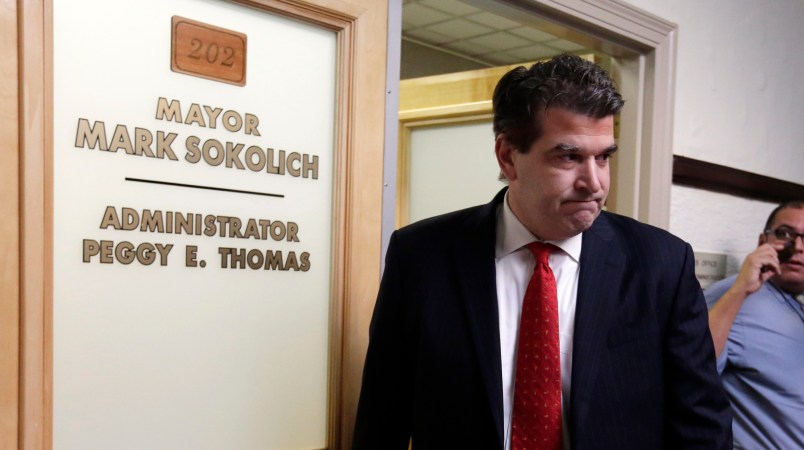The idea that the George Washington Bridge lane closures in September were targeted at the mayor of Fort Lee, N.J. was first suggested publicly by the mayor himself, the same week the closures began.
“I’ve asked the [Port Authority] for an explanation, but they haven’t responded,” Sokolich told a local newspaper columnist. “I thought we had a good relationship. Now I’m beginning to wonder if there’s something I did wrong. Am I being sent some sort of message?”
By the end of that month, the theory had evolved, and a motive was attached. The Democratic mayor’s decision to not endorse Gov. Chris Christie’s (R) re-election, the theory went, had motivated the closures, which caused a massive traffic jam in Fort Lee. It was revenge-by-gridlock. Democrats in the state picked it up from there, keeping the theory alive for months as justification for their investigation, through the release last week of a massive trove of documents related to the incident.
But since the release of the documents, something has happened to the Christie bridge scandal’s endorsement theory. People have begun to discard it.
The thousands of pages of subpoenaed documents released by state Assembly Democrats on their face provided little insight into what exactly motivated the lane closures. While the documents showed that senior members of the Christie administration were involved in discussions about the closures, and that officials had disparaged Sokolich specifically after the closures began, the documents appear to be missing any talk of the endorsement issue. That absence has left room open for alternate theories to explain the scandal.
The most active work has been done by pundits and other observers. MSNBC’s Rachel Maddow floated one theory on her program last Thursday. Maddow suggested that the lane closures were prompted by Christie’s bitter fight with Senate Democrats over re-appointments and nominees to the state Supreme Court. But senior Democrats in New Jersey, including state Senate President Stephen Sweeney (D), rejected Maddow’s theory in interviews with TPM last week.
A second alternate theory was proposed over the weekend by MSNBC host Steve Kornaki and former New Jersey political reporter Brian Murphy. On MSNBC’s “Up with Steve Kornacki” on Sunday, Murphy discussed the possibility that the the lane closures were connected to a billion-dollar development project in Fort Lee called The Hudson Lights.
Several Democratic legislators in New Jersey who have spoken with TPM this week have called the development project theory “plausible” without embracing it. Instead, these lawmakers have emphasized that the multiple investigations into the incident need to be allowed to play out.
In an interview with TPM on Monday, Senate Majority Leader Loretta Weinberg (D), who has played a key role in the investigation all along, did not dismiss the idea that the closures were retaliation against Sokolich. But she didn’t exactly rule out the alternate theories, either.
“There’s so much speculation here because … there is a big missing link,” Weinberg said.
Finally, there is Sokolich himself. Following the release of the documents, the mayor gave several interviews about the story. In an interview with CNN’s Wolf Blitzer last week, Sokolich said he didn’t “recall a specific request to endorse” the governor. Something subsequently jogged the mayor’s memory before an interview with The New York Times.
Sokolich told the Times that he had in fact discussed an endorsement with Christie people. According to the account he gave the Times, Sokolich was approached last spring by a Christie re-election campaign staffer, who wanted to know if Sokolich would endorse the governor.
“I said, ‘Yes, I’ll consider it, because I’ll consider anything,’ ” Sokolich told the Times.
Sokolich eventually decided to endorse Christie’s Democratic challenger, Barbara Buono — but he said he never got back in touch with the Christie campaign.
When TPM attempted to contact the mayor on Monday to ask questions about his new account, his office said that Sokolich was no longer speaking publicly about the scandal.






